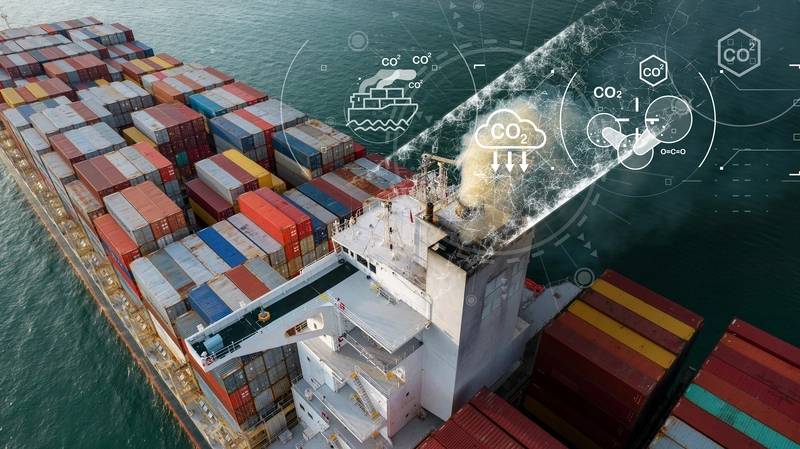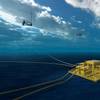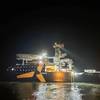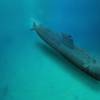Designing Ships Around Emissions: The Right Path or a Fork in the Road?
When discussing ship design, the maritime industry has been tossing around a number of new terms and definitions. Sustainability, alternative fuel “ready”, digitization and lifecycle are a few of the terms becoming more commonplace amid the industry’s search for zero emissions solutions. As IMO MEPC 80 meetings push emissions reduction to meet “well to wake” requirements, we will learn much of the challenge is tied to energy and infrastructure ashore. Electrification and the development of “green” alternative fuels in hydrogen and ammonia will require supply chains and a power grid well beyond what is available today. Keep in mind there is not a single alternative fuel that will bring us to zero alone. And most of the artists concepts and reports of ship contracts with “alternative fuels” are only “ready”; many are not integrated designs or delivered capable of using the fuels they are “ready” for.
The fork in the road may soon be a highway interchange with four or five exits, none of which alone will get the industry to its final destination of “zero” emission. That said, a new path is evolving, and with it, changes in commercial ship design at levels not seen in decades.
Our industry has a deep history moving the world’s cargo—a history that extends well beyond automotive, trucking, air and rail. At first, we hoisted sails and allowed mother nature to determine speed and direction. Later, we developed new types of ships and propulsion systems when wooden ships and sail did not meet our global expansion goals. As time went on, designs and systems became more complicated. Many solved problems during periods of industrialization while others created new ones. Our current dance with Climate Change and emissions falls to the latter. It is a new problem that requires new solutions.
The ship design process is complex. Success is achieved with the cooperative effort of many technical practices – structure, stability, power, capacity, speed and safety are best served with detailed design integration assuring they are working together and not against each other. Design needs to solve problems, and the industry is dealing with many during this period of time. Current challenges include drought and conflict diverting maritime commerce away from the canals, new emissions regulatory commitments placing significant pressure on vessel owners, a crippling shortage of qualified seafarers and new operating patterns through the Artic; the list continues to grow. Future ship design can solve many of these issues if the solutions are integrated into the development process.
As we watch the world change, our industry must also change. That change involves building more efficient ships beyond the initial hull hydrodynamics and propulsion design.
Major steps in environmental efficiency and sustainability took place with the revised designs of “ECO-Ship”. Make no mistake about it, the movement was based on economics and efficiency not environmental regulatory compliance. Fuel costs rose with the establishment of the Emission Control Areas (ECA) and SOx reduction, so the ship designers went to work. Hull resistance starts at the bow, and modifications were made to the standard bulbous bows of nearly every ship type. Those modifications produced an estimated 7.5% reduction in fuel consumption.
Further research worked toward larger two stroke engines (derated) operating at slower RPMs and employing larger propellers. A further 7.5% fuel reduction was experienced. In the medium range product tanker market, no less than six generations of “eco ship” were developed in Korea with the latest showing a 34% reduction in fuel consumption as compared to late 1980s vintage standard designs. The work was not done for environmental or regulatory compliance. It was simply economics, efficiency and performance under charter. After all, who benefits from a reduction in fuel consumption? Owner, end consumer or charterer? Certainly, the planet.
 © Yellow Boat / Adobe Stock
© Yellow Boat / Adobe Stock
Through this period, and with the understanding that these design changes also worked toward lower energy requirements and a reduction in emissions, regulations were developed to “rate” vessels. Confusing calculations and algorithms for EEDI, EEVI and now CII were produced; and here is where the design integration process was forgotten. With the “ratings” and regulations came smaller engines at higher maximum continuous ratings (MCR) to meet design and contractual speeds, and as a result we lost the benefit of waste heat provided by larger propulsion engines. We now operate auxiliary boilers to produce freshwater, heat accommodations or cargo with an increase in fuel consumption and in turn emissions and CO2.
The problem solving goes beyond engine and hull in design. The industry has identified a shortage of seafarers. A younger generation has not followed the employment path of going to sea, whether academy graduate or hawsepiper. This is a generation that is connected 24 hours by mobile phone, tablet and laptop. Look at recent ship design. When was the last major design change in cabin, accommodation and hotel services? Can we provide full streaming and internet services at sea? Can that single bunk in the cabin be upgraded to larger suites and better living conditions? Can entertainment off watch hours go beyond a movie selection and into every available local TV station and streaming service for that employee to be connected to home?
When we speak about autonomous operation and technology, can that step forward include designs that ease the workload for a seafarer, improve voyage routing and in turn reduce energy consumption rather than reporting the technology will remove crews and place that employment possibility in the closet. Can that autonomous technology worked toward monitoring a sophisticated propulsion system that can reach zero emissions, and in turn create new employment requirements on board?
In only a few short months after the American Bureau of Shipping held a congressional briefing in Washington DC with an industrial conference on nuclear power, no less than three IACS Class Societies along with several shipbuilders and naval architects have identified new ship designs integrating Small Module Reactor (SMR) nuclear technologies as the vessel propulsion systems. One builder in China has identified Molten Salt Reactors (MSR) as their energy source, while others are researching the Westinghouse eVinci SMR with Triso as the fuel source. There are more than several SMR technologies and startup companies working toward employing SMR in commercial shipping designs. In no uncertain terms, the technology, when successfully deployed, will not only change current ship design but also allow the industry to actually reach zero emissions.
If and when the application and technology is successful, the issue of full ship design integration and modeling will become more important than any previous commercial design. The initial concept designs improve cargo capacity and speed. The nuclear regulatory requirements will separate machinery space from accommodation space. Will this be an opportunity to upgrade the spaces, work toward improving the work environment at sea and opening new seafarer involvement?
The automation, operation and monitoring of the propulsion system will require updated communication requirements and shore-based support. An opportunity to utilize autonomous technology specifically to address nuclear operation, crew size and crew capability at the machinery space. With that technology upgrade, sneak in the streaming service for your crew on board. A new technician crew billet will be required.
Speed and power will also affect hull hydrodynamics in more than several ship types or markets as the vessels may have the capability of 25+ knots. Speed will affect cargo delivery periods and with that the actual number of vessels at sea to adjust those cargo needs. With this source of clean power, imagine the vessel being capable of plugging into the grid and providing the power to operate existing terminal container cranes, EV charging stations for transport equipment or for that matter chemical refinery operations and manufacturing. Whether ship or power barge, the designs can also provide power to underdeveloped locations and work toward upgrading the existing grid at any location.
There is a mountain of work and research required to reach this end. Some SMR fuels can provide energy for 8 years, others look toward 15 to 20 years. The fact that normal bunkering could become a thing of the past opens new voyage itineraries and port locations where fossil fuel or alternative fuel is not available. With these fuel projections the actual lifecycle of the vessel will also be affected and reconfigured.
A movement to nuclear commercial ship design and construction to reach zero emissions will be financially driven, taking into account not only the cost of ship construction but also the disruption to existing industry and manufacturing. Regulation will be difficult, and with that small precise steps should be taken. We do not need to see “nuclear ready” designs. We need a comprehensive plan and action with full financial modeling and complete trust in the safe operation of the technology. This is not the technology of current or past nuclear power ashore or at sea. The fuel source is safer and controlled. Our problem will be perception and industry acceptance, both at sea and in port. That said, start the program as the manufacturers and designers believe the introduction of approved SMR and ship designs can be available in 5 to 10 years. A final zero emission solution can be introduced well before the regulated 2030 or 2050 IMO dates.















